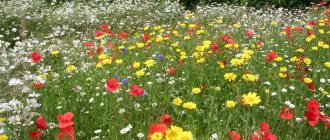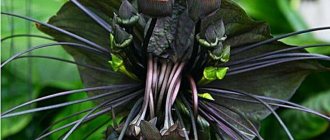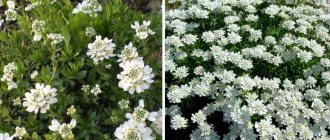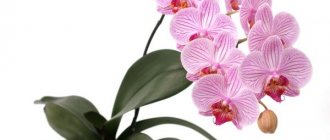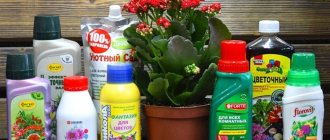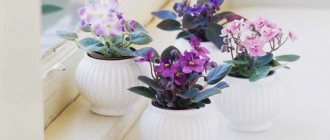Beautiful indoor flowers have long become an integral attribute in apartments and houses. Plants complement the interior well, create an atmosphere of comfort, and saturate the air with oxygen. Thanks to the huge variety of varieties, everyone can choose the most suitable option for them - climbing, cacti, ferns. But there are winter flowers that would delight with their bright buds even in the cold season.
Poinsettia - Christmas beauty
This winter flower is extremely popular among gardeners. Beautiful buds bloom at Christmas. The decorative upper leaves can be bright yellow, red, white or orange. Poinsettia is considered a heat-loving plant, which is extremely sensitive to the slightest hypothermia. Sudden temperature changes are dangerous for the flower. Hypothermia and sudden contact with warm air leads to leaf fall. If a flower is purchased in winter, it becomes ill immediately after transportation.
The owner of such a plant must protect it from freezing (to move the pot, you must carefully wrap it in a thick layer of paper). You can place poinsettia in a warm place with sufficient lighting; the air should be moderately humid.
Charming tropical orchid
This flower is able to give real beauty and grace of its buds all year round. But the peak of the ovary is observed from November to March. Depending on the growth form, orchids can belong to two groups:
- monopodial;
- sympodial.
The first variety retains its apical tuft throughout its life, due to which the orchid does not have any restrictions in growth. Among monopodial flowers there are various types (for example: phalaenopsis has a rosette shape, but vanilla has a liana-shaped form). The leaves are almost always collected in a rosette at the very top of the stem, since it grows the slowest. Shoots and inflorescences are tied in the axils of the leaves from the lateral buds.
It is worth noting that in a sympodial orchid the stem grows faster, but when it reaches a certain size, the uppermost bud turns into an original inflorescence or dies. In the future, such a shoot will no longer be able to grow, since a new shoot will begin to form at its base. During this, not only lateral, but also apical inflorescences are formed, which originate from the buds at the base of the shoot. That is why all the stems of the sympodial orchid have a slight thickening and are turned into so-called bulbs (stem tubers).
Healthy!
If an orchid completely lacks tubers, all the nutrients and moisture accumulate in the succulent stems and leaves.
With the onset of the growing season, the growth of the aboveground part of each variety occurs according to an individual principle. Sympoidal species develop rapidly, forming more and more side shoots. In monopodial varieties, the stem lengthens, and new leaves are formed at the very top. When the growing season is over, orchids go into a dormant state. During this period of time, all tissues of young shoots and leaves become hard and dense.
You may be interested in:
Phalaenopsis mini orchid: care and propagation at home The mini phalaenopsis orchid can be found in a flower shop not as often as other varieties of this plant. This…Read more…
Yucca
This evergreen plant does not lose its decorative properties at any time of the year. It is quite common in garden landscapes, although it has an average winter hardiness of up to -28°C.
The most attractive part of this garden plant is the large bell-shaped inflorescences in white, pink or cream shades. Strong flower stalks grow up to 1.5 m in length. Yucca leaves are narrow, sword-shaped, pointed, collected in a basal rosette.
Unpretentious indoor azalea
This plant is well known to many gardeners who grow it in their plots. But at home, flowers look no less attractive, as they delight with their bright buds in winter. Hybrid varieties of Indian or Japanese azaleas are considered to be indoor varieties. Winter flowers can be grafted into a neat, compact plant. Blooming buds are most often colored soft pink, white, and red. In some cases, you can find azaleas with light fringes.
In order for such winter plants to bloom well, they must be located in a cool part of the room. The soil must be constantly moistened. You should be extremely careful not to accidentally overheat, dry out or overwater the plant, as it may shed its leaves and stop blooming. All dried buds must be removed in a timely manner. When the period of active flowering is over, the shoots can be shortened slightly, thereby maintaining a good habit. From the beginning of April to August, the plant must be fertilized with special compounds.
Advice!
When the warm days of May arrive, the flower can be moved to the garden.
Lofant
The spicy-cereal plant lofant is also a good decoration for winter landscape flower beds. Its dazzling green foliage and dense spikes of inflorescences create elegant beauty in the garden almost all year round.
The color range of the ears is very diverse - from white, lilac and blue tones to pink and orange. In addition, lofant has a strong aroma due to the essential oils it contains.
In winter, this perennial forms dense bush-like clumps and dry, picturesque inflorescences that add expressive texture to any flower garden.
Unusual Kalanchoe Blossfeld
The main task when growing such a flower is to correctly place it relative to the main light sources. It is thanks to this that the plant will produce inflorescences more often. If everything is done correctly, then Kalanchoe will bloom from late autumn until summer. The flower feels great on the windowsill, as it tolerates direct sunlight. The duration of daylight should be within four hours.
You may be interested in:
Late flowers: names of autumn plants for flower beds Autumn is the time when everyone around is preparing for the cold: people are harvesting crops, making preparations for the winter, taking out warm clothes and...Read more...
Experts recommend placing a pot of Kalanchoe on the southeast side so that after lunch a shadow is formed, which this plant really likes. An original flower pot with a flower can be hung on the southwest side, where there is light twilight during the first half of the day. It is the short daylight hours that allow for abundant flowering.
Important!
The temperature regime is considered equally important, since delicate flowers do not tolerate cold well. Kalanchoe is considered a tropical plant that grows well at air temperatures from +21 to +32 °C. In winter, these figures may be slightly reduced.
What flowers can be grown in the garden in winter?
If you are lucky enough to live in a climate with mild winters, these plants will bloom all year round.
Winter Pansies
They may not boast of splendor, but they will definitely impress you with their resistance to cold weather. They are able to withstand temperatures down to 0°C for a long time, and will also survive the winter without losing flowering.
Witch hazel
You've definitely heard about this useful flower! It is used in skin care and medicinal cosmetics, as well as in the preparation of herbal teas. This is because frost resistance gives witch hazel powerful anti-inflammatory properties. In addition, the plant is not at all afraid of pests, and its yellow petals will delight you with flowering from early January to March.
Snapdragon
Snapdragon's bright yellow petals look very summery, but the flower itself loves cold weather and will happily spend the winter in your garden. Regular removal of dead flowers significantly extends its flowering period: from autumn to the very beginning of spring.
Hellebore
Sometimes it is also called “Christmas Rose” and it is a wonderful association with winter. Its flowers range from light pink to deep purple, dark red and almost black. In mild winters, buds appear already in early January, but in cooler winters you will have to wait until February or March.
Calendula
If you want more sun in the cold winter, cheerful calendula will do the job wonderfully. It will not only lift your spirits, but also support your health: you can make a healing tincture, cream or tea from dried flowers.
Delicate Saintpaulia
Some varieties of indoor plants can bloom wildly throughout the winter, but with proper care. Saintpaulia needs moderate watering and sufficient lighting. It is important to ensure that the soil always remains slightly moist, but not wet. If a flower receives too much water, its leaves will become limp and dull, which may cause the process of rotting.
The basic rule is that it is forbidden to water the violet if the soil has not yet dried completely . In cold and damp soil, the roots quickly deteriorate, causing the plant to die within a few days. If the situation is not progressing, then you can try to re-root the flower. Saintpaulia must be protected from the cold, but if the pot is on a north window, thermal insulation material must be placed under the vessel.
You should be careful with fertilizers: if the plant is kept without lighting, you need to reduce the frequency and concentration of nutrients. Most often, one feeding per month is enough. You need to use specialized preparations that contain a minimum of nitrogen. Fertilizers from Dutch manufacturers give excellent results. Violets do not grow well in large containers; pots with a diameter of 10 cm are considered ideal. Experienced florists use soil based on high-moor peat with vermiculite and perlite for planting.
Charming hippeastrum
This type of flower belongs to the decorative category. The flowering period occurs during the cold season (mainly at Christmas). At the primary stage, the bulb produces a stem with flowers, and only then petals appear. Blooming buds look very attractive and unusual.
In modern interiors, winter flowers are increasingly used, the names of which are striking in their diversity. Depending on the variety, they can have different shapes and shades. Good growth of hippeastrum is observed in a sunny and warm place. In order for the bulbs to form new flowers, their tops must receive direct sunlight. When planting, the tubers should rise slightly above the soil.
You may be interested in:
What house flowers bring happiness and prosperity to the house? We are surrounded by diversity Read more…
Rules of care
In order for the plant to delight you with its freshness and beauty, you need to know the basic rules of care. In cold weather, flowers are most vulnerable to adverse factors. That is why experienced florists have developed a whole list of agrotechnical techniques for caring for indoor plants.
Watering and replanting
With the arrival of cold weather, the usual regime of soil moisture undergoes serious changes. If the room is constantly hot, the soil will dry out much faster, which is why the flower will need to be watered more often. When the pot is placed on a cold windowsill, the soil may remain damp for quite a long time. The main thing is to carefully examine the condition of the soil before watering, so as not to provoke rotting of the root system.
If the flower does not show signs of active growth, then it is better to refuse fertilizing in winter. Mineral salts that are not absorbed by the plant will salinize the soil, making it unsuitable for the formation of a normal root system. When the flower grows throughout the year, fertilizers need to be applied, but in lower concentrations. If you have just purchased a plant, it has already developed stress, which is why any medications will simply be inappropriate.
Advice!
In winter, it is better not to transplant flowers. Dividing the root system and cuttings can cause the death of the plant.
Reproduction and disease
Except in emergency situations, it is better to refuse reproduction until spring. Pruning and pinching are considered contraindicated for all plants. Such manipulations are best tolerated by flowers in March and April.
In winter, indoor plants may exhibit rot of bacterial or fungal origin. For the latter, a decrease in temperature is considered a favorable process. Due to this, pathogenic microflora will rapidly develop, which increases the risk of root rotting. This problem is common in cacti and succulents, as well as in euphorbia and martinaceae varieties. As a preventative measure, experts recommend moderate watering. For succulents, the soil is moistened only once every 2-3 weeks. Lithops and cacti are not watered in winter.
Pests . Already in the fall, there is a rapid activation of various insects that feel good in a room with dry air. Particularly dangerous are scale insects and ticks. The most effective drugs are Neoron and Aktara. During the cold season, flower pests become noticeable even to an inexperienced person, as plants practically stop growing, and insects continue to multiply.
Artificial lighting . The optimal option is when the flower pot is located at a distance of 20 cm from the fluorescent lamp. Conventional products that operate on the incandescent principle will simply not be enough. Artificial lighting is not important for growing cacti and succulents. But for tropical herbaceous plants, this method of care is considered mandatory.
Heuchera
She is considered one of the main winter garden stars. High frost resistance can withstand temperatures down to -34°C. And its bright decorative effect allows it to be widely used in landscape design.
The beautiful, unusual lobed leaves of this perennial are attractive at any time of year. They amaze with a huge variety of colors. Green, cream, red, purple, orange, yellow, brown, gray and silver shades are presented in all possible combinations.
During the cold season, heuchera gives special effect and volume to flower beds, having the ability to seem to glow from under the snow. For winter flower beds, varieties of this plant with brightly colored foliage that will contrast with the rest of the garden landscape are best suited.
Heuchera retains its exquisite beauty and attractiveness from early spring until the onset of cold weather, so it is excellent for growing in front flower beds, along central paths, in rock gardens and rockeries.
Winter garden outside
Such flower beds are often called beds of beautifully dying plants. Many garden crops, after entering the dormant stage, can surprise with unusual “dry” compositions. They turn out to be universal and multifaceted, because every season has its own surprises. Such plants have, although discreet, inimitable beauty.
Planting ornamental or coniferous shrubs in winter flower beds allows you to create unusual “skeletal” accents in the design of the site. But the main attention is always attracted by herbaceous perennials. Depending on what characteristics of the plant come to the fore, all representatives of winter flower beds are divided into several categories:
- Flowers with bright and showy seed pods and dry inflorescences.
- Extraordinary plants with evergreen foliage, which is especially beautiful in winter.
- Crops with unusual straight shoots that add lush textuality to flower beds.
- Plants that are hung with bright berries or fruits.
Interesting!
Today there is a huge variety of different perennials, whose dry inflorescences look simply amazing under a ball of sparkling snow.
Depending on personal preference, you can choose plants with different colors and textures. But ornamental grasses always remain favorites.
Helenium
This flower is great for decorating a winter flower bed. The plant, although herbaceous, can withstand frosts down to -34°C. Its straight, tall stems reach a height of up to 160 cm.
The leaves are straight, branched towards the top, pointed at the ends. Helenium inflorescences are basket-shaped, usually solitary or collected in corymbose groups. They look very impressive during flowering and after, when dense, oblong-rounded achenes with slight pubescence are formed.
The outer petals of the flowers have a tongue shape and a wide variety of shades - yellow, orange, purple, brown or bicolor. The central petals are tubular in shape and yellow or brown in color.

